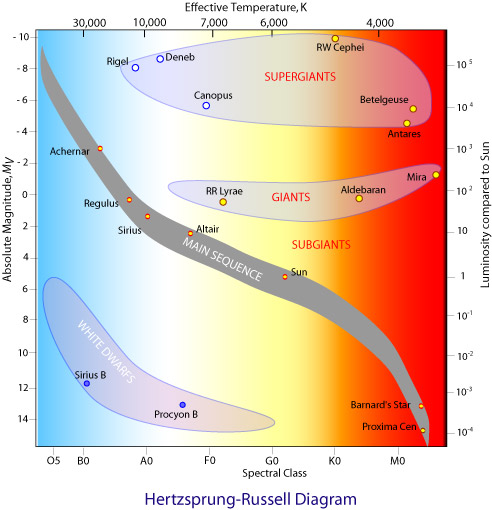
Formation and Structure of
Stars
Star formation happens
because of a compromise between two of the most awesome forces
of nature: Gravity and the
Strong Nuclear Force. If gravity wins the star contracts. If, on the
other hand, the enormous pressure generated from thermonuclear
reactions wins the star expands. The birth, life, and death of
stars are controlled by the interplay between these two
awesome forces.
For stars to form a medium is
required. This material is the Interstellar Medium. In some
cases the interstellar medium is easily visible as a cloud of
dust and gas, and we called it a Nebula, such as the Lagoon,
Orion, or Horsehead Nebulae.

Undersea corral?
Enchanted castles? Space serpents? These eerie,
dark pillar-like structures are actually columns of cool
interstellar hydrogen gas and dust that are also incubators
for new stars. These "Gaseous Pillars"
protrude from the interior wall of a dark
molecular cloud like stalagmites from the floor of a
cavern. They are part of the "Eagle Nebula"(also called M16
- the 16th object in Charles
Messier's 18th century catalog of "fuzzy" objects
that aren't comets), a nearby star-forming region 7,000
light-years away in the constellation Serpens.

Stars form from the cold dark cloud of gas and dust in the interstellar space. A blast wave from an exploding star, or from some other disturbance going through the gas, causes clumps of matter to form. Each clump gradually contracts as Gravity pulls it together in a process that can no longer be reversed. At the same time the core rotates. Near the center of the core the mass increases and the collapse accelerates, as the energy of the falling gas heats up the center of the core and a Protostar is formed. A large cloud of cold gas still surrounds the newly formed star. Throughout the contraction, the protostar converts part of its energy into radiation and part into thermal energy that increases the temperature of the star. The contraction continues and with it the increase of temperature at the core of the star until, finally, it reaches an enormous temperature of 10 million K; this temperature is now large enough for Hydrogen atoms to overcome their Coulomb repulsion and fuse, creating a Thermo-Nuclear Reaction. The pressure in the interior of the star increases greatly and halts the collapse. The wind of gas coming from the star clears away its surrounding cocoon. Finally, the new star settles down into a period without much change, with the star converting Hydrogen into Helium generating an enormous amount of energy.
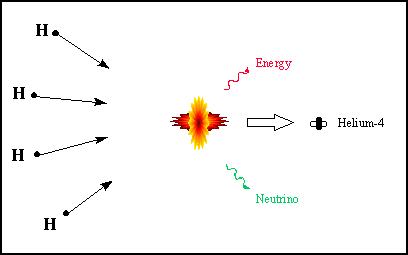
| The Proton-Proton Chain
At a temperature of 10 million K the
following three reactions, which form the
proton-proton (or pp) chain, are responsible for
energy generation in the star:
4 protons (hydrogen
nuclei)=6.693x10-27kg
E=Mc2=(0.048x10-27kg)*(3x108
m/sec)2
P=(0.43x10-11 Joules)*(1038/sec)
[Sun]
In one second the Sun
generates enough energy to satisfy the
|
| All Four Fundamental Forces of Nature Operate in a Star! |
Gravity enables stars to form from the interstellar medium, but
once a cloud contracts to the produce a protostar, something has
to stop the gravitational collapse so that a stable star can be
produced. That stability is reached as the core of the protostar
becomes hot enough to ignite thermonuclear fusion. We then see
that nuclear reactions are as important to the life of
stars as gravity is to its formation.
Although bigger stars are
more massive than low-mass stars - and one would expect them
to live longer - the bigger the star the more quickly it
forms, evolves, and dies. This is because nuclear reactions
proceed quicker for a bigger star. Indeed, almost all
properties of a star, such as its size, color, and ultimate
fate, are fixed by its mass. The most massive stars are
blue. The temperature at their surface soars to about 40,000
degrees (almost seven times hotter than the Sun) and they are
classified as O stars in the H-R diagram. They are 40 times
more massive than the Sun and about 20 times bigger. They
shine 500,000 times brighter than the Sun; they are The
Blue Supergiants. Moving
down through the stellar mass scale we come to the white stars
of spectral type B and A and through the F stars until we
reach the yellow G
stars, like our own Sun. Stars of lower mass are smaller and dimmer,
as their surface temperature decreases and their emission
spectrum shifts toward the red. Orange (K) stars have about 3/4 of
the Sun's mass and size, while the coolest M stars are the are
red color.
They are typically 1/5 the
Sun's mass and and they have a temperature at the surface of
"only" 3,300 degrees. It would take about 100 such stars
together to shine as brightly as our Sun.

Estimating the life-expectancy of a star, the time it spends on the main sequence, is not difficult. The more massive the star the more nuclear fuel available; that increases the lifetime of the star. However, the more massive the star the more hotter and bigger the star. These factors increase the luminosity of the star and reduce the lifetime of the star. Hence, lifetime=fuel /rate of consumption, or:
Lifetime = M/L =
M/M3.5 = 1/M2.5
|
|
|
|
|
|
B0 A0 F0 G0 K0 M0 |
15 3.5 1.7 1.1 0.8 0.5 |
13,000 80 6.4 1.4 0.46 0.08 |
11 million 440 million 3 billion 8 billion 17billion 56 billion |
The Orion Nebula: an
Emission Nebula (HII region)
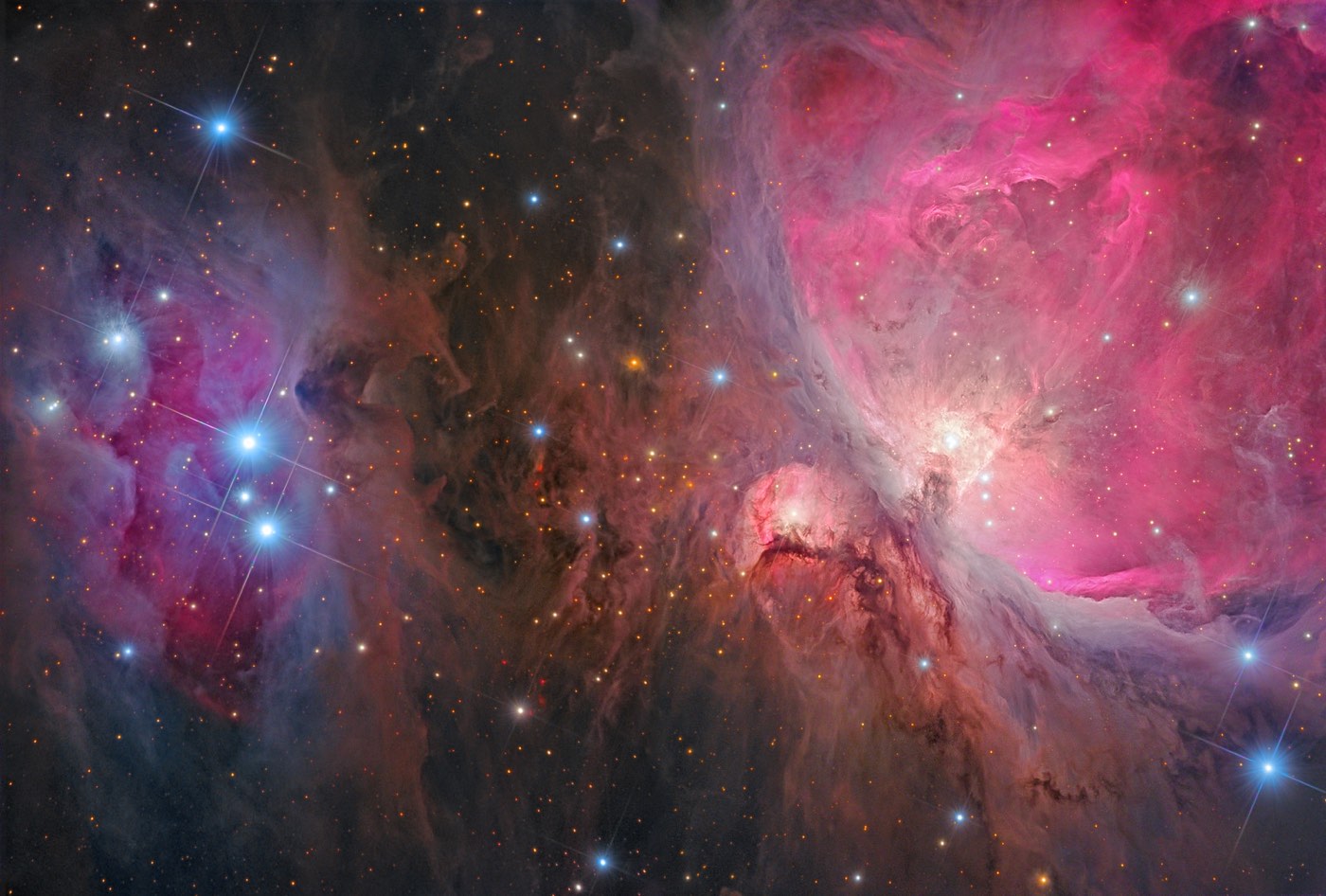
This giant nebula is only 1,500 ly
away from us, and 2.5 ly wide. Even though the
density is low, it has enough mass to produce thousands of
stars! Some of the stars are as young as 8 million years! One
star is 40 times the mass of the Sun, which will go into
supernova very soon. Hubble Space telescope has taken many
pictures of Orion nebula and the details tells us the story of
star formation.
Located 1,500 light-years away,
along our spiral arm of the Milky Way, the Orion nebula is
located in the middle of the sword region of the constellation Orion the Hunter, which
dominates the early winter evening sky, at northern latitudes.
In addition to the cluster of young stars (Trapezium) this
stellar cavern contains 700 hundred other young stars at various
stages of formation. The stars have formed from collapsing
clouds of interstellar gas within the last million years. The
most massive clouds have formed the brightest stars near the
center and these are so hot that they illuminate the gas left
behind after the period of star formation was complete. The more
numerous faint stars are in the process of collapsing under
their own gravity, but have become hot enough in their centers
to be self luminous bodies.
The Pleiades: an Open
Cluster (Reflection Nebula)
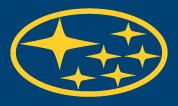
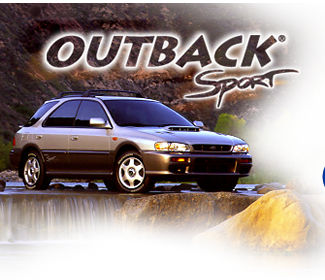

The
Pleiades - an open cluster of stars - are
blue-colored which indicates that they are hot spectral
B-type. The color also indicates that the Pleiades are "young"
stars - less than 100 million years old; otherwise they would
already consumed themselves!
The Globular Cluster
M80
M80- A globular cluster

This stellar swarm is M80 (NGC 6093), one of the
densest of the 147 known globular
star clusters in the Milky Way galaxy. Located
about 28,000 light-years from Earth, M80 contains hundreds of
thousands of stars, all held together by their mutual
gravitational attraction. Globular clusters are particularly
useful for studying stellar evolution, since all of the stars
in the cluster have the same age (about 15 billion years), but
cover a range of stellar masses. Every star visible in this
image is either more highly evolved than, or in a few rare
cases more massive than, our own Sun. Especially obvious are
the bright red giants, which are stars similar to the Sun in
mass that are nearing the ends of their lives.